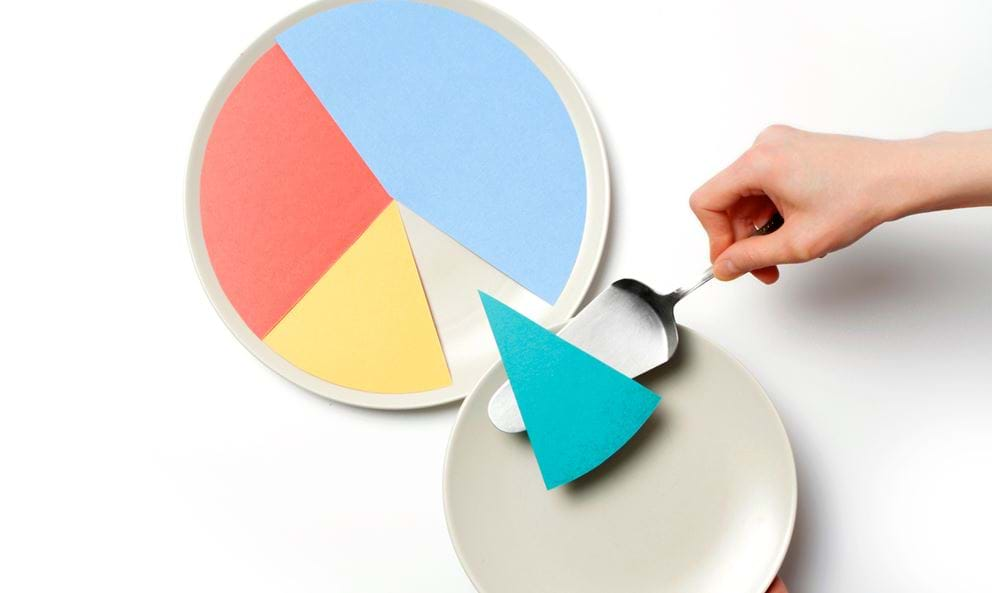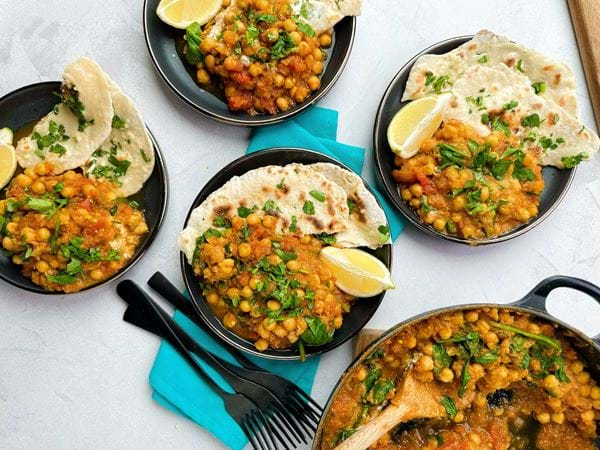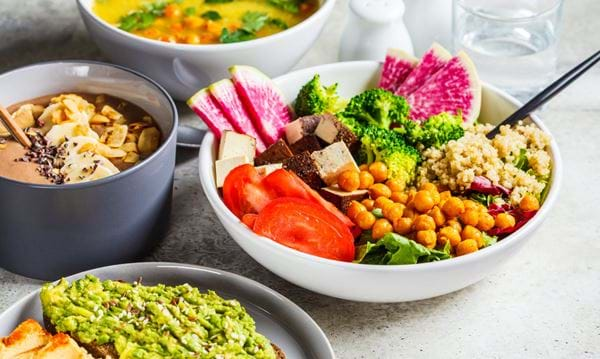Don’t Let Portion Sizes Be Your Downfall

Dieters, new and old alike, often fall into the trap of dramatically under or overestimating how much they’re eating.
In those cases, where ingredients aren’t being laboriously weighed and calories counted, everything comes down to being able to properly judge portion sizes.
So, without further ado, here are a few tips to mastering the art of portion control.
Leaves are a great way to fill out a plate
Leafy greens such as spinach and kale, while being extremely rich in vital nutrients such as vitamins A, C, and K, are also very low in calories, with 100g of kale containing only 49 calories1 and 100g of spinach containing 23 calories2.
This makes these vegetables the ideal plate-filler, and an excellent way to counterbalance your servings of more calorific foods. You want to finish each meal feeling satiated, and leafy greens will help you accomplish that without exceeding your calorie targets.
Using a smaller plate can make all the difference
Humans seem to have a natural inclination to fill their plates, whatever the size. If you’re aiming to lose, or even gain, weight, a simple trick you can use is to start eating off a smaller or larger plate, depending on your goals.
By filling a smaller plate, you’ll be playing a trick on your subconscious mind and convincing it that you’re having a larger meal than you are. And if you’re aiming to eat more for the sake of bulking up, filling a slightly larger plate will make the process feel more natural and less like force-feeding yourself.
Beware of oils and dressings
Having smaller portions of food is a great weight loss strategy, but not if you’re carelessly slathering your meals with salad dressings, olive oil, or melted butter.
Oily dressings don’t tend to factor into most people’s portion size estimates, as they sit on top of the food without taking up much visible space.
It’s likely, however, that these dressings are more calorie-dense than anything else you have on your plate, with 100ml of olive oil containing a shocking 807 calories3.
Wait a while between helpings
When switching to smaller portion sizes, reaching the end of your plate can often feel underwhelming. You look around for a minute in confusion and then realise that you’re still hungry.
Before reaching for a second helping, however, help yourself to a glass of water and take a small break of about half an hour to do something else. Often, the hunger will go away as the food can settle. In many cases, the desire to eat large meals has less to do with actual hunger and more to do with habit and hasty eating.
Take an extra small helping of dessert
Desserts tend to be far more calorie-dense than the main course, often filled with sugar for the sake of tantalising our taste buds. When trying to lose weight, it’s a good idea to take what you consider a small dessert portion, and then half it.
The odds are far more stacked in favour of you underestimating the caloric density of that slice of chocolate cheesecake than overestimating it.
1 https://ndb.nal.usda.gov/ndb/foods/show/2983?fgcd=&manu=&lfacet=&format=&count=&max=50&offset=&sort=default&order=asc&qlookup=11233&ds=&qt=&qp=&qa=&qn=&q=&ing=
2 https://ndb.nal.usda.gov/ndb/foods/show/3167?fgcd=&manu=&lfacet=&format=&count=&max=50&offset=&sort=default&order=asc&qlookup=11457&ds=&qt=&qp=&qa=&qn=&q=&ing=
3 https://ndb.nal.usda.gov/ndb/search/list?qlookup=04053


